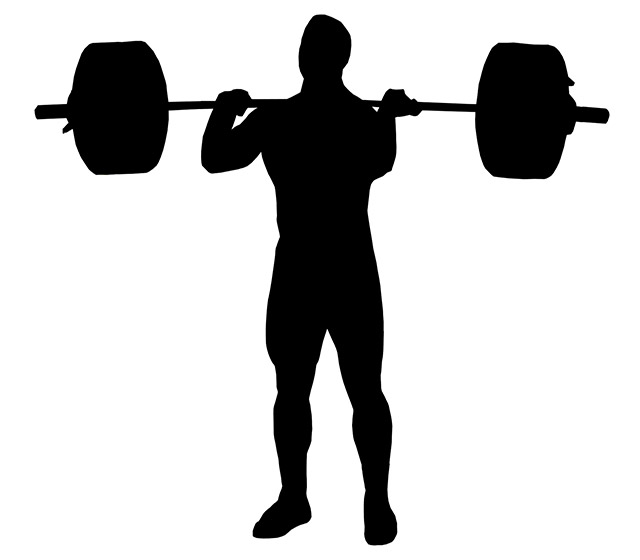The power clean repetition max test is a measure of body power, assessed by determining the maximum weight that can be lifted using the power clean exercise. This test is similar to the many repetition max tests for measuring maximum muscle strength. Instead of measuring max strength, this test uses the same principle to measure maximum power, using standard weight lifting power exercises.
test purpose: to measure body maximum power
equipment required: a range of free weights and a barbell.
pre-test: Explain the test procedures to the subject. Perform screening of health risks and obtain informed consent. Prepare forms and record basic information such as age, height, body weight, gender and test conditions. See more details of pre-test procedures.
power clean procedure: After an adequate warm up, the subject stands at the bar, with feet shoulder-width apart. Bend down and grasp the bar with the hands outside the knees, palms facing the body. Ensure the head and neck are in a neutral position with eyes facing forward (avoid rounding of the spine). Lift the weight from the floor by extending the legs, keeping the arms straight. Once the weight is at the level of the thighs, the knees are flexed and the torso dropped below the bar, catching the weight on the front of the shoulders. The weight is then pushed up to finish in a standing position. See more details of the power clean technique.
 power clean exercise
power clean exercise the test: start with a test lift at a light weight, to check for the correct technique. Then one repetition is performed for each weight in an ascending sequence up to the expected max lift. At least a couple of minutes for recovery is allowed between reps. If a weight is failed, another attempt may be made.
scoring: the maximum weight lifted is recorded. To standardize the score it may be useful to calculate a score proportional to the person's body mass.
advantages: the required equipment is readily available in most gymnasiums, and the test is simple to perform.
disadvantages: This test should only be performed by experienced weight lifters, with a good power clean technique. If the subject is not able to show the correct technique during the warm-up, the test should not proceed.
comments: The results of this test may be specific to the equipment used so is best to use the same equipment for test-retest measures. The warm-up procedure should also be recorded and repeated with further testing. If any variation in technique was allowed, this should be recorded on the results sheet for referral when the test is repeated.
Similar Tests
- 1RM Squat Test
- 1RM Dead-lift test
- 1RM Bench press test
- Vertical Jump Testing
- Power Ball Overhead Throw Test
Related Pages
- General description of 1RM fitness tests
- A calculator to estimate 1RM
- Power Clean strength training technique


 Current Events
Current Events